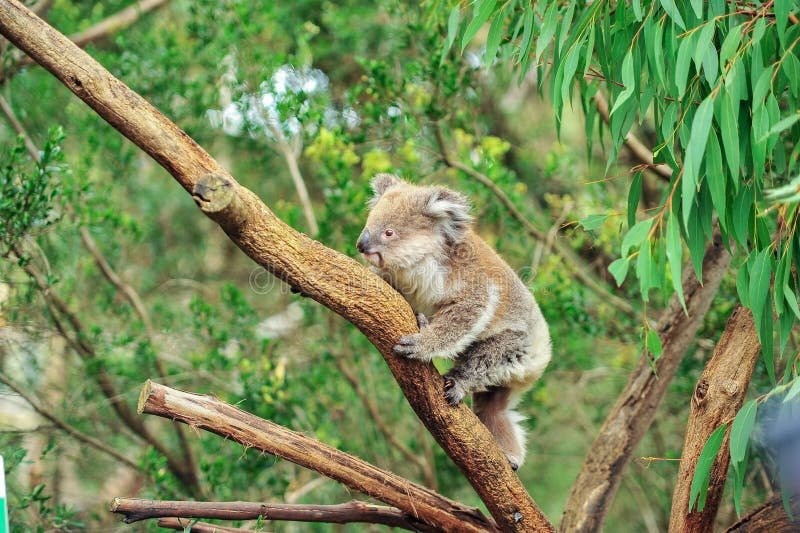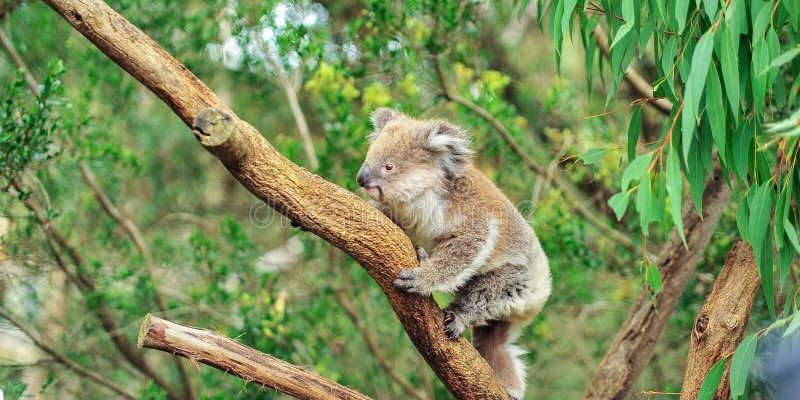
One of the coolest things about koalas is their unique adaptations. You see, they aren’t just lounging around; they’ve developed some interesting strategies for dealing with the unpredictable challenges of their homes. So, how do they do it? Let’s explore the various tactics koalas use to survive when the going gets tough.
Understanding the Koala’s Habitat
Koalas primarily live in eucalyptus forests, which are scattered across eastern Australia. The landscape can be pretty extreme. Some areas experience heavy rainfall, while others can be bone dry for months. These trees are more than just their homes; they’re a vital food source. You might think that koalas are picky eaters, and you’d be right! They eat only certain types of eucalyptus leaves.
Eucalyptus leaves have a lot of water, which helps koalas stay hydrated. In fact, they can get most of the water they need from their food. But here’s the catch: eucalyptus leaves are not very nutritious—so koalas need to eat a lot of them! To cope with their demanding diet, they have a slow metabolism that allows them to survive on fewer calories. It’s nature’s way of ensuring that they use every bit of energy they get from those leaves.
Water Conservation Techniques
You might be surprised to learn that koalas are masters of water conservation. While they do drink water from streams or ponds when they have the opportunity, they largely rely on the moisture in eucalyptus leaves. This means they can survive in drier conditions better than many other animals.
Their fur plays a role in this too. It’s thick and insulating, which allows koalas to maintain their body heat while reducing water loss. When the weather gets unbearably hot, they have a unique way of coping: they will seek shade and rest during the hottest parts of the day. By staying cool and hydrated, they can survive even when resources are thin.
Dealing with Droughts
Droughts can be particularly severe in Australia, creating a stressful environment for koalas. When rainfall is scarce, eucalyptus trees may shed their leaves or even die off, leading to reduced food supply. So, how do koalas adapt? They have a couple of tricks up their fur sleeves.
First, they’ve been known to lower their activity levels. During periods of drought, koalas may sleep even more than usual to conserve energy. This is essential since finding enough food can become a real challenge. Additionally, some studies suggest that koalas will temporarily shift their ranges to areas where more nutritious leaves are available. It’s like a survival dance, moving to the beat of nature’s tune.
Wildfire Survival Strategies
Wildfires are a devastating factor in the Australian landscape. Koalas are unfortunately often caught in the crossfire, but they’ve developed impressive survival strategies. For one, their thick fur provides some protection from heat, but it’s not foolproof. When a fire approaches, koalas might climb higher in trees to escape the flames.
After a fire, koalas can also benefit from the regrowth of eucalyptus trees. New leaves can be more nutritious, providing a food source as the forest begins to heal. However, the road to recovery is not easy. Some koalas may move to neighboring regions where they can find food and shelter. It’s a risky expedition, but it’s often necessary for survival.
Health Challenges in Harsh Environments
Life in a harsh environment takes its toll, and koalas face various health issues that can impact their survival. Stress from heat, drought, or fires can weaken their immune systems, making them more susceptible to diseases. Chlamydia is a well-known issue that affects many koalas, leading to reproductive problems and even blindness.
In recent years, conservation efforts have been ramping up to help address these health threats. Wildlife hospitals treat sick koalas, but the larger goal is to create a healthier habitat. By preserving eucalyptus forests and ensuring a stable environment, we can help koalas thrive, not just survive.
Conservation Efforts for Koalas
Speaking of conservation, protecting koalas has become a top priority. Organizations focused on their wellbeing are working diligently to address the numerous challenges these animals face. Many initiatives focus on preserving their habitats by planting more eucalyptus trees and maintaining their forest environments.
You might also find that some communities are engaging in awareness campaigns. These efforts encourage the public to understand the value of koalas and the importance of preserving their natural environments. As we learn more about how koalas survive in harsh environments, we can take steps to ensure a brighter future for these iconic animals.
The Importance of Eucalyptus Trees
Eucalyptus trees are not just a food source for koalas; they represent the heart of their ecosystem. These trees provide shelter, food, and a complex habitat for many other animals as well. The relationship between koalas and eucalyptus trees is truly symbiotic.
By protecting eucalyptus forests, we’re not only helping koalas but also preserving the biodiversity of entire regions. So the next time you hear about conservation efforts, remember that they’re not just about saving one species—they’re about saving an entire ecosystem.
In conclusion, koalas exhibit remarkable resilience and adaptability in the face of harsh environmental challenges. From clever dietary restrictions to unique survival tactics during droughts and fires, these charming marsupials show us how life can flourish even in tough circumstances. By taking steps to protect their habitats and support conservation efforts, we play a crucial role in their future. Let’s ensure that koalas continue to thrive in the beautiful, wild heart of Australia.

